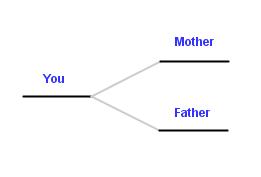 The Canoe in the River problem is an algebra classic. You know how it goes: “Paddling upstream, it takes Betty Boater 6 hours to travel up the river to Point Apex. It takes only 3 hours for the return trip downstream to Point Bellows. If the distance between Point A. and Point B. is 15 miles, what would Betty Boater’s speed be in still water?”
The Canoe in the River problem is an algebra classic. You know how it goes: “Paddling upstream, it takes Betty Boater 6 hours to travel up the river to Point Apex. It takes only 3 hours for the return trip downstream to Point Bellows. If the distance between Point A. and Point B. is 15 miles, what would Betty Boater’s speed be in still water?”
Below is wonderful retelling of the Canoe in the River problem created by Dan Meyer. Using a video camera, an ipod, a quiet morning in a mall, and some great editing, this problem is brought new life in this modern and engaging context.
Check it out at http://blog.mrmeyer.com/?p=7649. Meyer seems to be focused on modernizing mathematics curricula, and the more stuff he does like this, the better.
And for Betty Boater’s speed, click here.




